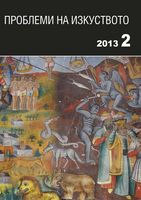Литургично планиране: къде и как верните представят своите приношения
Liturgical Planning: Where and how the faithful present their offerings
Author(s): Stanislav StanevSubject(s): Cultural history
Published by: Институт за изследване на изкуствата, Българска академия на науките
Summary/Abstract: The article deals with the issue of where and how the fifth and sixth century congregations presented their offerings. The observations of Th. Mathews on Ordo Romanus Primus have been drawn and his reconstruction of the presentation of offerings in the early Roman churches has been adopted: it was during the mass when the faithful handed over their offerings in the senatorium and the matroneum (fig. 3). Two churches in Greece are regarded in the light of the early Roman liturgical planning: the basilica of Lechaion in Corinth and the Basilica B in Nikoipolis (fig. 2). Comparatively, the information of Codex Barberini Gr. 336 has been considered as well as what is known about the skeuophylakia of the churches in Constantinople. The outcome of the latest archaeological explorations of Hagia Sophia provides wider opportunities for exploring the function of the skeuophylakion. Coloured slabs as those inlayed in church floor (fig. 8), mark a π-shaped enclosed space (fig. 6). It signifies the areas of access for the congregation, coming into the skeuophylakion to hand over their offering to the deacons. The opportunities for physical enactment of passing and receiving the offerings as well as writing down the names in the liturgical diptych are discussed. Both the archaeological data about the functioning of the skeuophylakion of St. Eirene church (fig. 5), as well as the reconstruction after written sources of the skeuophylakion of Blachernae church, which according to C. Mango was in the southern part of the transept (fig. 8), are thoroughly examined. The chamber in the north-eastern corner of a church nearby the city of Sliven, studied in 1960–1961 (fig. 1) and groundlessly declared a baptistery, is being considered. It is argued that it has been used as a skeuophylakion.
Journal: Проблеми на изкуството
- Issue Year: 2013
- Issue No: 2
- Page Range: 3-9
- Page Count: 7
- Language: Bulgarian
- Content File-PDF

